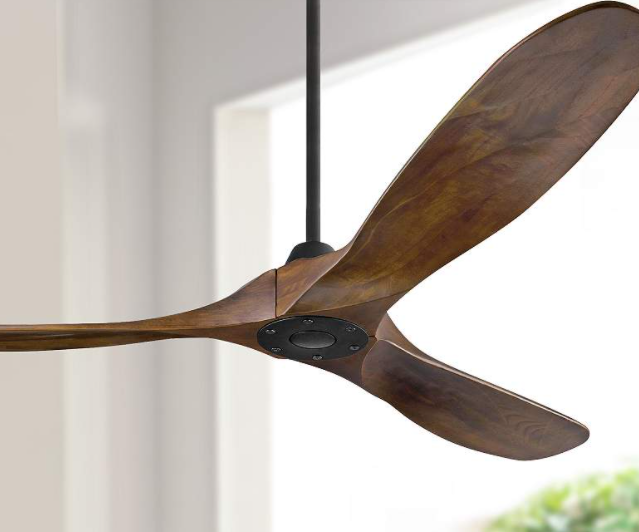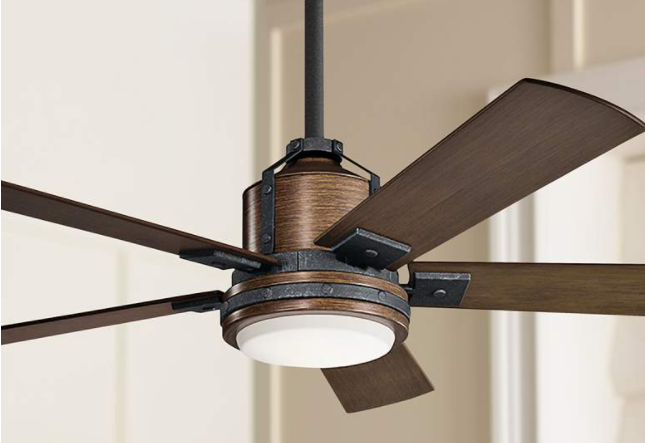Guide to AC and DC Ceiling Fan Motors

Every ceiling fan uses a built-in motor to power the fan and spin the blades, creating air movement. Not every motor is identical, however. Some ceiling fans uses an AC fan motor, while others use a DC fan motor. While both motors are perfectly capable of powering your ceiling fan, there are a few key differences in how they work and what benefits they provide.
This article will discuss how each motor works, what makes them different, and lay out the various benefits of both AC and DC ceiling fan motors.
What is an AC fan motor?
AC standards for “alternating current,” an electrical current which periodically reverses direction and alternates power continuously. Alternating current is the form of electrical power that powers your home. It is also the form of electricity which is used by most kitchen appliances, televisions, and more. Alternating current was originally championed by George Westinghouse and Nikola Tesla during the “war of the currents” during the late 1800’s.
An AC fan motor applies that same technology to your ceiling fan, using the supplied power from your home and regulating the electrical speed by controlling the frequency of the current. This results in greater reliability and better energy efficiency in your ceiling fan. Since the ceiling fan is able to take the alternating current provided by your home, it does not require any extra steps to convert that current to use in the fan.

What is a DC fan motor?
DC stands for “direct current,” electricity which flows in a constant direction with a steady stream of power. As opposed to the form of electricity which powers your home, DC is commonly used in batteries, solar power, and low-voltage appliances. Large quantities of electricity are also provided using direct current in smelting aluminum and other metals, and direct current can be used to transmit large amounts of power across distances. Direct current was Thomas Edison’s favorite in the “war of the currents” during the 1800’s.
A DC fan motor applies that same technology to your ceiling fan, converting the supplied AC power from your home and regulating electrical speed by controlling the current itself. This results in more efficient air movement, using less energy, and nearly silent motor operation. As the DC motor is a little simple with fewer parts, they also tend to be smaller than other ceiling fans, allowing for a greater range of styles.

Differences between AC and DC fan motors
There are a few key differences between AC and DC fan motors. AC fan motors tend to be less expensive than DC fan motors, but DC motors are a little smaller due to the components and parts that are used in each design. The smaller size of DC fan motors allows designers to get more creative with the ceiling fan design. DC motors are also slightly more efficient when it comes to moving air throughout your space and are nearly silent, but AC motors offer better overall reliability and slightly longer lifespan. Even the speeds are different. 6-speed options are more common in fans that use a DC motor. Meanwhile, 3-speed and 4-sped options are much more common with AC fan motors.
Ultimately, the choice between installing a ceiling fan with an AC motor or a ceiling fan with a DC motor comes down to personal preference. There are benefits and downside to each, and neither is objectively better than the other. Compare and contrast the ceiling fans you are interested, weighing the benefits of each, and also take the style design into consideration. While the interior workings of a ceiling fan can be important, it is also important to find a fan that fits and looks good in your home.
